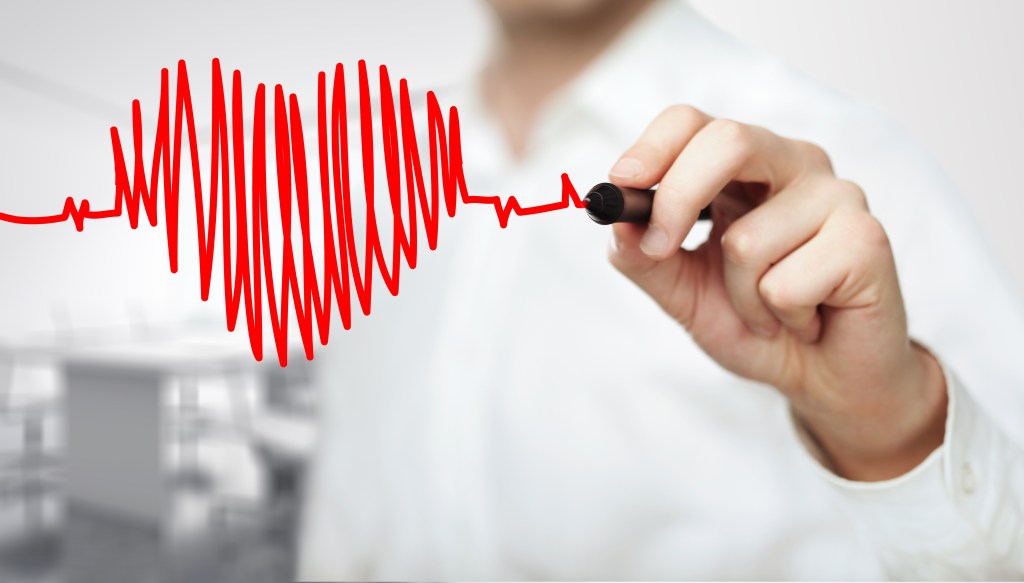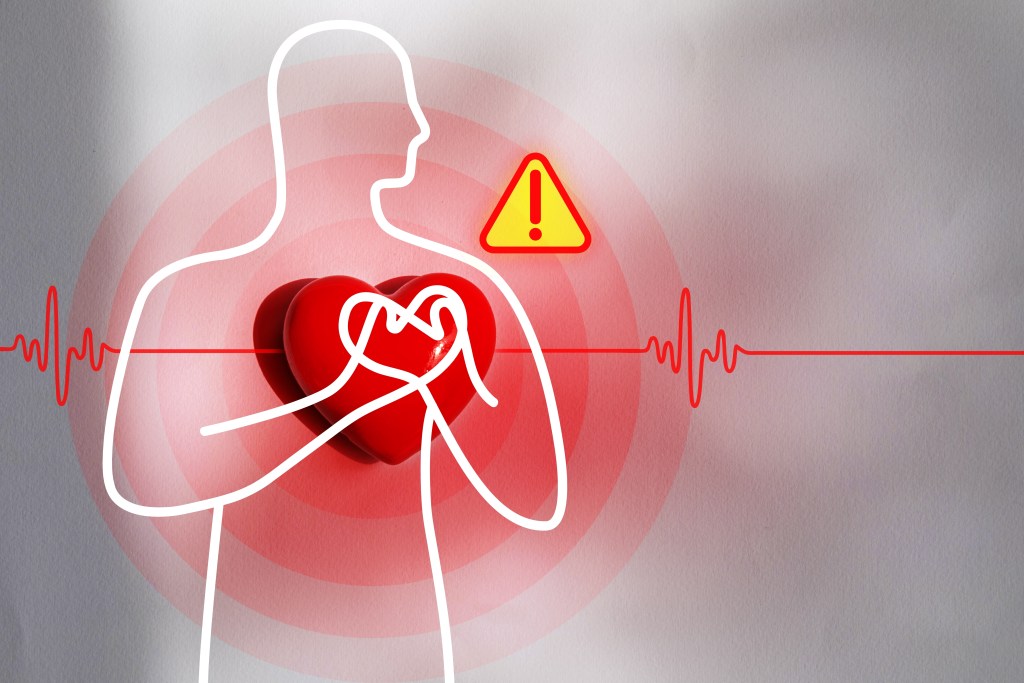Hypertension, widely known as high blood pressure, occurs when the force of blood against the artery walls is consistently too high.
Chronically elevated blood pressure can damage and stiffen the arteries, leading to an increased risk of cardiovascular disease, such as heart attack, stroke, and other complications.
Discover common causes of hypertension and learn seven tips to lower blood pressure naturally.
Understanding blood pressure levels
Blood pressure is measured by evaluating the force of the blood against the artery walls and is recorded as systolic and diastolic numbers.
The systolic blood pressure is displayed at the top of the blood pressure reading. It measures the pressure in the arteries when the heart beats or contracts.
The bottom reading is diastolic blood pressure, which measures arterial pressure between heartbeats.
When written, systolic blood pressure measurement is stated first, followed by a forward slash (/) and the diastolic reading.
Blood pressure ranges are categorized into five stages:
- Normal: 120/80 mmHg
- Elevated: 120 to 129/80 mmHg
- Hypertension stage 1: 130 to 139/80 to 89 mmHg
- Hypertension stage 2: 140/90 mmHg or higher
- Hypertensive crisis: 180/120 mmHg or higher
A reading of 180/120 mmHg or higher requires immediate medical attention, as it increases the risk of a significant adverse cardiovascular event, such as a heart attack or stroke.
Watch the video below to learn how to lower blood pressure naturally.
Signs of high blood pressure
Hypertension is often referred to as a silent killer, as most people experience no symptoms, especially during the early stages. High blood pressure can persist undetected for years, even at dangerously elevated levels.
However, some indicative signs of hypertension include:
- Nose bleeds
- Headaches
- Dizziness
- Anxiety
Additionally, a hypertensive crisis may cause chest pain, vision changes, difficulty breathing, heart palpitations, and severe migraines.
These symptoms can be life-threatening and require immediate medical attention–call emergency services or visit the nearest emergency room right away.

Health effects of high blood pressure
Uncontrolled blood pressure puts significant stress on the heart and blood vessels, as well as organs, which can lead to a wide range of serious health problems.
Stiffened arteries can restrict blood flow, increasing the risk of blocked or ruptured blood vessels, a heart attack, stroke, or aneurysms, a group of life-threatening events that can be physically or cognitively debilitating.
Hypertension also forces the heart to work harder to pump blood throughout the body, eventually weakening the heart muscle. As a result, the heart may struggle to circulate blood efficiently, potentially leading to heart failure.
Additionally, chronically high blood pressure may cause vision loss, blindness, and memory problems by damaging blood vessels in the eyes and potentially interrupting blood flow to the brain.
Sexual dysfunction and kidney damage can also occur due to the narrowing of the arteries, which restricts blood circulation to reproductive and urinary tract organs.

Hypertension causes and risk factors
Elevated blood pressure typically develops over time, usually due to unhealthy dietary and lifestyle habits.
Common causes and risk factors of hypertension include:
- Alcohol misuse
- Excessive caffeine consumption
- High-carb or ultra-processed diet
- Physical inactivity
- Chronic stress
- Poor sleep quality
In addition, certain conditions, such as type 2 diabetes, obesity, or chronic kidney disease (CKD), can also raise blood pressure by narrowing the arteries or changing how the body maintains fluid balance.
These health issues can make it more challenging for blood to pump freely throughout the body.
Other risk factors include family history, age, and race. Those with genetic predispositions to hypertension or heart disease are more likely to develop high blood pressure, especially when combined with lifestyle risk factors.
Advanced age can make managing high blood pressure challenging because the arteries naturally thicken over time.
Research published in Scientific Reports found that more than 60 percent of adults over the age of 60 will develop high blood pressure, even at a healthy weight.1
Additionally, African Americans appear to be at greater risk of hypertension than White, Asian, or Hispanic populations.
This group also develops hypertension earlier in life, is less responsive to blood pressure medications, and has the highest prevalence of preeclampsia, a pregnancy-related complication characterized by dangerously elevated blood pressure.

7 tips to lower blood pressure naturally
Hypertension is typically managed with high blood pressure medicines, such as diuretics, angiotensin-converting enzyme (ACE) inhibitors, or calcium channel blockers.
However, a heart-healthy lifestyle is vital to cardiovascular function and may help manage blood pressure levels without the need for medical intervention, especially in the early stages.
Here are seven helpful tips to lower blood pressure naturally.
1. Follow a low-carb diet
Diets high in refined carbohydrates and sugars contribute to insulin resistance, a metabolic imbalance linked to an increased risk of high blood pressure and heart disease.
Hyperinsulinemia can cause the kidneys to retain excess sodium and fluids, which increases blood volume and can contribute to blood pressure elevations.
“Reducing carbohydrate intake can therefore decrease water retention, which may lower blood pressure, especially in people who are sensitive to sodium or insulin,” explains Dr. Berg.
2. Practice intermittent fasting
Intermittent fasting involves time-restricted periods of eating and fasting and may have several cardiometabolic advantages, including increasing insulin sensitivity and aiding weight loss, both crucial for optimal blood pressure control.
Additionally, chronic inflammation damages the blood vessels, further contributing to stiffness and increased blood pressure.
Fasting may influence the body’s anti-inflammatory mechanisms by triggering the release of messengers that inhibit systemic inflammation.
By lowering inflammation and oxidative stress, fasting may aid in protecting the arteries and supporting the management of high blood pressure.

3. Maintain optimal vitamin D levels
Vitamin D may help lower high blood pressure by regulating calcium metabolism, which is essential for contracting and relaxing the blood vessels.
Daily sun exposure and consuming foods naturally rich in vitamin D, such as fatty fish, eggs, and dairy products, can boost vitamin D levels and support cardiovascular health.
4. Reduce stress
When stressed, the body releases hormones, such as cortisol, to prepare the body to fight or flee from danger. This biological response causes the arteries to narrow and the heart to beat faster, leading to a temporary increase in blood pressure.
However, long-term stress may lead to chronic hypertension and increase the risk of cardiovascular disease.
A study published in the Journal of Tehran University Heart Center found that applying stress reduction techniques significantly lowered systolic and diastolic blood pressure and helped improve overall quality of life.2

5. Incorporate non-starchy vegetables
Non-starchy vegetables, such as avocados, tomatoes, and leafy greens, are rich sources of minerals that support heart health and function, particularly potassium and magnesium.
Potassium helps counteract the effects of sodium, which is linked to high blood pressure when consumed in excess. This electrolyte mineral also stimulates blood vessel walls to dilate, allowing blood to flow more freely throughout the arteries.
Magnesium also plays a role in blood vessel contraction and relaxation, which can enhance blood pressure reduction and support healthy heart function.
Research published in The Journal of Clinical Hypertension concluded, “Magnesium is a natural calcium channel blocker, blocks sodium attachment to vascular smooth muscle cells…increases nitric oxide, improves endothelial dysfunction, causes vasodilation, and reduces blood pressure.”3
6. Engage in regular exercise
Exercising 3 to 5 times weekly for 30 minutes, through activities such as walking, cycling, swimming, stair climbing, or weight lifting, has been shown to help maintain optimal blood pressure levels.
This is likely due to exercise strengthening the heart muscle, which allows it to pump blood more effectively and decreases the force against the blood vessel walls.
A study published in Advances in Experimental Medicine and Biology found that regular exercise can decrease systolic blood pressure by five mmHg and the risk of coronary heart disease, stroke, and all-cause mortality by up to 14 percent.4
7. Prioritize rest
In healthy individuals, blood pressure drops between 10 and 20 percent overnight to allow the cardiovascular system to recover from the day, a phenomenon known as nocturnal dipping.
Poor sleep can interrupt this process, which explains why healthy sleep habits, such as aiming for eight hours of rest, limiting technology, and creating a calming routine, can help lower your blood pressure naturally.

When to talk to your doctor
Healthcare providers typically screen blood pressure at wellness visits and alert patients to elevated levels.
However, if you don’t regularly see a medical provider, general guidelines recommend checking blood pressure levels every two years between the ages of 18 and 39.
Those 40 and older should have yearly evaluations or more frequent visits if at-risk for hypertension or heart disease.
If you suspect you have high blood pressure or are at risk, test your blood pressure regularly using a home blood pressure monitor and seek medical care if you are concerned about your cardiovascular health.

Key takeaways
Hypertension is a potentially dangerous health condition that can contribute to heart disease and cardiovascular events, including heart attacks and strokes, if left untreated.
However, healthy lifestyle habits, such as following a low-carb diet, eating whole foods, reducing stress, and exercising regularly, may help lower blood pressure naturally.
Regularly monitoring blood pressure levels is vital, especially for those at risk of hypertension. If you experience signs of high blood pressure, visit your healthcare provider immediately.
FAQ
1. What are the best ways to lower blood pressure naturally?
Managing stress, practicing intermittent fasting, and exercising regularly are some of the best natural ways to promote normal blood pressure.
Additionally, reducing intake of processed foods, sugars, and carbohydrates, as well as maintaining optimal vitamin D levels, and consuming nutritious foods can promote cardiovascular health and vasodilation.
2. What should I eat if my blood pressure is high?
A whole-food diet rich in non-starchy vegetables and healthy fats can help support healthy blood pressure. Vegetables provide potassium and magnesium, which aid blood vessel function, and offset the effects of excess sodium.
3. Does drinking water lower blood pressure?
Yes, drinking water may help control high blood pressure levels, especially related to dehydration.
Adequate water intake is needed to maintain normal blood volume and viscosity, which reduces the strain on the heart to circulate blood throughout the body.
4. How long does high blood pressure last?
High blood pressure is a long-term condition that can silently progress for years without noticeable symptoms, potentially leading to serious complications, including aneurysms, strokes, or heart attacks.
Adopting a healthy lifestyle and monitoring your blood pressure regularly are essential for maintaining healthy levels and minimizing the risk of these life-threatening events.







